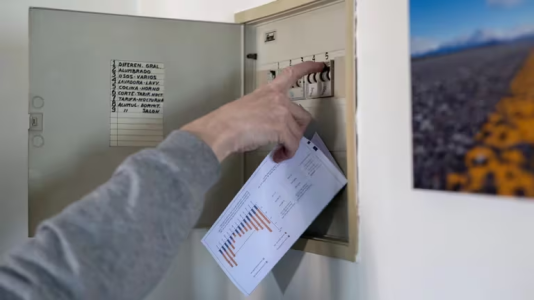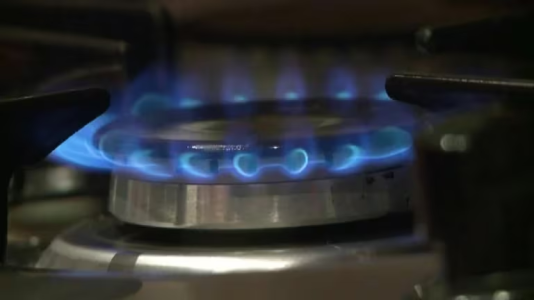jorgetrip
New member
In the midst of strong increases in electricity and gas, a Government decision left the energy sector on the verge of a new collapse - Infobae

Source:

 www.infobae.com
www.infobae.com
February 16, 2024
The adjustment scheme impacts Cammesa, the company that mediates the energy market, which needs urgent funds from the Treasury to pay the sector's generators. “We are in the middle of the perfect storm,” they said in the company that belongs to the State. The Energy Response
By Sebastian Catalano

Electricity bills will reach users with increases of up to 150% in the AMBA (Alberto Ortega - Europa Press)
Starting in March, electricity bills will reach users with increases of up to 150% in the AMBA , as reported yesterday by the Government. The same thing will happen in gas shortly. In the midst of this context, a Government decision puts the energy sector on the brink of a new crisis, with many doubts about how the transition will be made if the subsidy removal scheme promoted by the Government is successful.
The problem was dramatically expressed yesterday in a meeting of the Executive Committee of the Wholesale Electricity Market Administration Company (Cammesa). One of the attendees described the context as a “perfect storm.” The company ran out of funds to pay the generators.
Cammesa is a state company that functions as a commercial intermediary: it charges distributors and pays generators. Distribution, in the case of electrical energy, is not federal, but rather each province has its company (its own or concessionaire) and charges its rate. The National State only sets the remuneration of Edenor and Edesur for the AMBA. With prices fixed during the last Kirchnerist governments, a great disparity was generated at the country level that is partly compensated because the national State subsidizes the most important component of the bill paid by consumers, which is the price of wholesale energy. Thus, the distributors stopped paying Cammesa – arguing that they could not survive without a rate increase – and that generated a total debt that as of January totaled around $400,000 million (it reached $500,000 million, according to private data, but in the last years of the Government of Alberto Fernández there were some specific negotiations on that credit). There was a commitment that the distributors would receive updates on the rates that was not fulfilled, and the companies began to cover operating expenses, among others, with that money not transferred.
At the other end of the business, Cammesa pays energy generators, both gas and electricity, much higher sums.

Eduardo Rodriguez Chirillo, Secretary of Energy
This morning, the Secretary of Energy, Eduardo Rodríguez Chirillo , spoke about the issue in an interview on Radio Miter. “For almost two decades, a fundamental principle was broken and we tried to convey to people that the rate paid has to reflect the cost of supply. And that subsidies are related to people's purchasing power. These concepts that seem so basic were very mixed,” he highlighted.
“That State, with transfers it made to the Cammesa company, was the one who paid the generators. So there we already had a first problem in which the cost did not clearly reach the people,” the official explained.
In Energy they assure that they will pay, but in the sector they have many doubts that this will happen. Also how it would be done: there are no definitions or details about it, for the moment. They believe that Javier Milei 's zero deficit scheme will end up complicating this disbursement. Hence the concern.
“Starting with the rate increases in February, with minimum subsidies and the new scheme that will come into force in March, no new debt will be generated, but the previous one must be covered. That is expected to be done in the coming weeks, obviously,” they emphasized from Rodríguez Chirillo 's secretariat .

Cammesa's situation also affects the gas supply
According to documents accessed by Infobae , Cammesa requested funds twice in recent months: on December 27 (Note No. B-171437-1), $797,887 million; and on January 30 (Note No. B-171894-1), $884,043 million. The answer was zero. In any case, these two orders already represent all the funds available to Cammesa for the entire year.
“The issue is that the State has to put in the same money. If the distributors paid all the debt, it would not be enough to pay for generation, not even close. In gas, everything will depend on whether large producers continue selling gas. We have to see how far they can last,” they say in Cammesa and highlight that not all the officials designated in Energy are there yet and that the lack of signatures complicates the situation even more.
“Electricity distributors receive energy from Cammesa, which injects it at a seasonal price into the transportation system and reaches the distribution points. The distributors transfer that price to the rate, it is a pass-through of the generation price to which the VAT is added, which is the distribution cost. As rates were not frozen in strong inflationary contexts, the VAT that is transmitted to the user is around 50% of what it should be. How do distributors pay Cammesa if the final rate does not cover all costs? What they do is finance themselves through non-payment to Cammesa and that generates a very large debt,” added the expert.
“If the generators are not paid, there will be problems. More or less the same thing happens in gas. The gas subsidy is concentrated in the production price. There are also no tax subsidies for transportation and distribution. What are many gas distributors doing? They stopped paying for gas to be able to meet operating costs. Now, that hits gas producers. And gas producers, the only way they have to defend themselves is with supply,” added Daniel Montamat , former Secretary of Energy and former president of YPF.
Thus, doubts grow about what will happen until the situation becomes “normal,” something that could take months, if it finally ends up happening. All in the midst of the quake that will generate the impact of the removal of subsidies in the pockets of users. It seems too much. A true perfect storm.

Source:

En medio de fuertes subas de luz y gas, una decisión del Gobierno dejó al sector energético al borde de un nuevo colapso
El esquema de ajuste impacta en Cammesa, la empresa que intermedia en el mercado de la energía, que necesita fondos urgentes del Tesoro para pagarles a los generadores del sector. “Estamos en medio de la tormenta perfecta”, aseguraron en la compañía que pertenece al Estado. La respuesta de Energía
February 16, 2024
The adjustment scheme impacts Cammesa, the company that mediates the energy market, which needs urgent funds from the Treasury to pay the sector's generators. “We are in the middle of the perfect storm,” they said in the company that belongs to the State. The Energy Response
By Sebastian Catalano

Electricity bills will reach users with increases of up to 150% in the AMBA (Alberto Ortega - Europa Press)
Starting in March, electricity bills will reach users with increases of up to 150% in the AMBA , as reported yesterday by the Government. The same thing will happen in gas shortly. In the midst of this context, a Government decision puts the energy sector on the brink of a new crisis, with many doubts about how the transition will be made if the subsidy removal scheme promoted by the Government is successful.
The problem was dramatically expressed yesterday in a meeting of the Executive Committee of the Wholesale Electricity Market Administration Company (Cammesa). One of the attendees described the context as a “perfect storm.” The company ran out of funds to pay the generators.
Cammesa is a state company that functions as a commercial intermediary: it charges distributors and pays generators. Distribution, in the case of electrical energy, is not federal, but rather each province has its company (its own or concessionaire) and charges its rate. The National State only sets the remuneration of Edenor and Edesur for the AMBA. With prices fixed during the last Kirchnerist governments, a great disparity was generated at the country level that is partly compensated because the national State subsidizes the most important component of the bill paid by consumers, which is the price of wholesale energy. Thus, the distributors stopped paying Cammesa – arguing that they could not survive without a rate increase – and that generated a total debt that as of January totaled around $400,000 million (it reached $500,000 million, according to private data, but in the last years of the Government of Alberto Fernández there were some specific negotiations on that credit). There was a commitment that the distributors would receive updates on the rates that was not fulfilled, and the companies began to cover operating expenses, among others, with that money not transferred.
At the other end of the business, Cammesa pays energy generators, both gas and electricity, much higher sums.

Eduardo Rodriguez Chirillo, Secretary of Energy
This morning, the Secretary of Energy, Eduardo Rodríguez Chirillo , spoke about the issue in an interview on Radio Miter. “For almost two decades, a fundamental principle was broken and we tried to convey to people that the rate paid has to reflect the cost of supply. And that subsidies are related to people's purchasing power. These concepts that seem so basic were very mixed,” he highlighted.
“That State, with transfers it made to the Cammesa company, was the one who paid the generators. So there we already had a first problem in which the cost did not clearly reach the people,” the official explained.
In Energy they assure that they will pay, but in the sector they have many doubts that this will happen. Also how it would be done: there are no definitions or details about it, for the moment. They believe that Javier Milei 's zero deficit scheme will end up complicating this disbursement. Hence the concern.
“Starting with the rate increases in February, with minimum subsidies and the new scheme that will come into force in March, no new debt will be generated, but the previous one must be covered. That is expected to be done in the coming weeks, obviously,” they emphasized from Rodríguez Chirillo 's secretariat .
Storm
“It is a perfect storm because costs doubled due to the devaluation and it is a largely dollarized business. In addition, distributors are paying less and debt is accumulating; and the Treasury, which has the 2023 budget to subsidize, is not sending funds. This year he didn't send anything. We are worried and so are many companies in the sector,” said the Cammesa source.
Cammesa's situation also affects the gas supply
According to documents accessed by Infobae , Cammesa requested funds twice in recent months: on December 27 (Note No. B-171437-1), $797,887 million; and on January 30 (Note No. B-171894-1), $884,043 million. The answer was zero. In any case, these two orders already represent all the funds available to Cammesa for the entire year.
“The issue is that the State has to put in the same money. If the distributors paid all the debt, it would not be enough to pay for generation, not even close. In gas, everything will depend on whether large producers continue selling gas. We have to see how far they can last,” they say in Cammesa and highlight that not all the officials designated in Energy are there yet and that the lack of signatures complicates the situation even more.
The opinion of the analysts
“If the generators are not paid, in addition, you begin to have downstream effects with the suppliers. The entire system is put in crisis from a commercial point of view. That this context is transferred to supply is already more critical, but it could happen. Distribution is a public service and cannot be cut off, but it could happen that a generator leaves the system, eventually, if it is not paid. It's rare, but it could happen. The same with gas. The State is beginning a process to withdraw subsidies and that is going to hit the provinces hard, because the bills are going to rise sharply. “We are seeing the tip of the iceberg of increases,” described Juan José Carbajales , from the consulting firm Paspartú.Emilio Apud , consultant and former energy secretary, agreed. “Cammesa does not receive that money and since it does not generate its own funds because it is an administrator, it would not be in a position to pay for the energy that it receives from the generators. If she does not pay, the generators stop delivering electricity and collapse occurs due to lack of supply,” she highlighted.“If the generators are not paid, there will be problems. More or less the same thing happens in gas” (Montamat)
“Electricity distributors receive energy from Cammesa, which injects it at a seasonal price into the transportation system and reaches the distribution points. The distributors transfer that price to the rate, it is a pass-through of the generation price to which the VAT is added, which is the distribution cost. As rates were not frozen in strong inflationary contexts, the VAT that is transmitted to the user is around 50% of what it should be. How do distributors pay Cammesa if the final rate does not cover all costs? What they do is finance themselves through non-payment to Cammesa and that generates a very large debt,” added the expert.
“If the generators are not paid, there will be problems. More or less the same thing happens in gas. The gas subsidy is concentrated in the production price. There are also no tax subsidies for transportation and distribution. What are many gas distributors doing? They stopped paying for gas to be able to meet operating costs. Now, that hits gas producers. And gas producers, the only way they have to defend themselves is with supply,” added Daniel Montamat , former Secretary of Energy and former president of YPF.
Milei says there is no money and cancels the Treasury contributions. Surely the Government hopes that with the increase in rates, both for electricity and gas, the issue of Cammesa's debt will be resolved and with these funds the generators can be paid. But Cammesa itself assures that it is not enough, that they already need more.“Cammesa does not receive that money and since it does not generate its own funds because it is an administrator, it would not be in a position to pay for the energy that comes in from the generators” (Apud)
Thus, doubts grow about what will happen until the situation becomes “normal,” something that could take months, if it finally ends up happening. All in the midst of the quake that will generate the impact of the removal of subsidies in the pockets of users. It seems too much. A true perfect storm.

